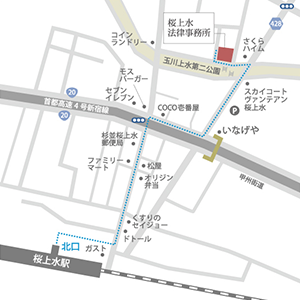Fsi Floor Space Index Definition
The ISF is the ratio between the built-up area on a plot and the area of the land is a rule followed in the development control standards of many cities. Real estate construction provides information about the maximum allowed floor area that can be built on a property. The value of the surface index changes from place to place. It also depends on the type of building. The FSI value of a particular area is easy to find in all building codes for different cities and towns. The complete shape of the ISF is the floor area index, also known as FAR for the floor area ratio. The ISF specifies the maximum allowable floor area that can be built on a property. Hyderabad is the only city with no upper limit for FSI value. Since the average is between 6 and 7, the city is entitled to optimize as much area as possible.
Thus, if you want to increase the limit of the Allowable Area Index (ISF) for your project, you will have to pay an additional fee to the local authority as an FSI Premium Fund. The attractiveness of the place and its population density can be understood by the FSI. From an ecological point of view too, it is extremely important to know the ISF. Home buyers need to take this into account, as there is usually less free space when the ISP is high. This means that if you have an area of 1200 m², you build 3 floors with an area of 1000 m². One of these terms that will appear during this journey is FSI. The abbreviation stands for Floor a Space Index; also known as FAR (Floor Area Ratio). Simply put, the ISF is the maximum allowable floor area that a builder can build on a given lot. The TFR is the ratio between the built-up area and the area available on the land. The ISP varies from place to place according to the rules and regulations of the municipal administration. The floor area index (SSI), also known as the floor area ratio (FAR), is the ratio of the total floor area of a building (built area) to the total area of land (land). This numeric value indicates the total area (on all floors) that you can build on a plot.
To calculate the floor area ratio (FAR) or floor area index (FSI), you need the total area of each floor as well as the total area of the property. It can then be calculated by: 8000 x 1.5 = 12000 square feet of area on your land. A FAR of 1.5 is called a 150% ISP. If you have a plot of 1000 square feet. Then with the formula: FSI = total floor area of all floors of the building / land area. Then FSI 1.5 = total area / 1000 total area = 1.5 x 1000 You can build up to 1,500 square feet on this plot. You can choose to build 2 floors of 750 square feet each or 3 floors of 500 square feet each. Several factors directly affect the ISF – location is the main one.
In areas where there is a subway, the FSI is usually higher due to lack of space. However, the TFR could be low in rural areas due to the amount of land available for construction. The value of the ISF affects the value of the land in a particular location. This value helps determine how much land can be used and whether the building can be multi-storey. The FSI score does not remain the same for all locations, it changes from one area to another and also differs from one building to another, depending on the number of floors. The complete shape of the ISF is the floor area index. It is the ratio between the built area on a plot and the area of the land that is a rule followed in the development control standards of many cities. It allows you to build the building according to the rules and regulations. If the master plan is created knowing the ISF, permits and NOCs will not be questioned if you know the surface index first-hand.
FSI is the ratio between the construction area covered by the ground and the gross area available on this plot. The complete form of the FSI is the ground area index and is the ratio between the built area on a plot and the area of the plot. It tells us directly the maximum allowed floor area that can be built on a plot. Depending on your type of building, you may know the ISP. Typically, different buildings have different EWBs, regardless of their location. For the same location, FSI can be based on No. of the floors of the building. Hyderabad State has not established any ISF restrictions. However, the Urban Corporation and Urban Development Department (MA&UD) is considering the reintroduction of the Land Area Index (FSI) for high-rise buildings in Telangana. The allowable area index in Gurgaon ranges from 1 to 1.45, as stated on the official website of the Haryana Urban Development Authority. With ISF, the planning and development of cities becomes uniform as they can ensure disciplined construction in all areas such as train stations, commercial and residential buildings, etc.
to meet deadlines. This can provide a clear distinction between installation space and open spaces. In addition, no unauthorized construction can take place. If FSI or FAR values are increased by the government, the chances of better occupancy, housing stock and better space also increase. Ultimately, all of this contributes to the price of the property. The ISF refers to the ratio between the area of the land covered (built-up area) and the area of that parcel (land) on which a building is located. This numeric value indicates the total area (on all floors) that you can build on a plot. It can be 3 floors of 4000 pi.ca, or 2 floors of 6000 pi.ca, without affecting the other municipal rules (minimum area of land, front, back, lateral and rear bribes, parking). FSI and FAR mean the same thing, but are called differently. For example, a FAR is expressed in decimals, while an ISP is a percentage.
The ISP can vary from city to city and even from place to place in a particular city. In fact, the FSI can even vary in the same location, depending on the number of floors in the building. FSI is regulated based on city area, building type, and other amenities. The FSI (Floor Space Index), also known as FAR (Floor Area Ratio), is one of the most important elements of real estate. The ISF refers to the maximum area allowed on a plot of land to be built. The TFR is the ratio between the area covered and the area available on the land. The ISF, which is usually determined on the basis of the National Building Code, is regulated by local or local state government authorities.



